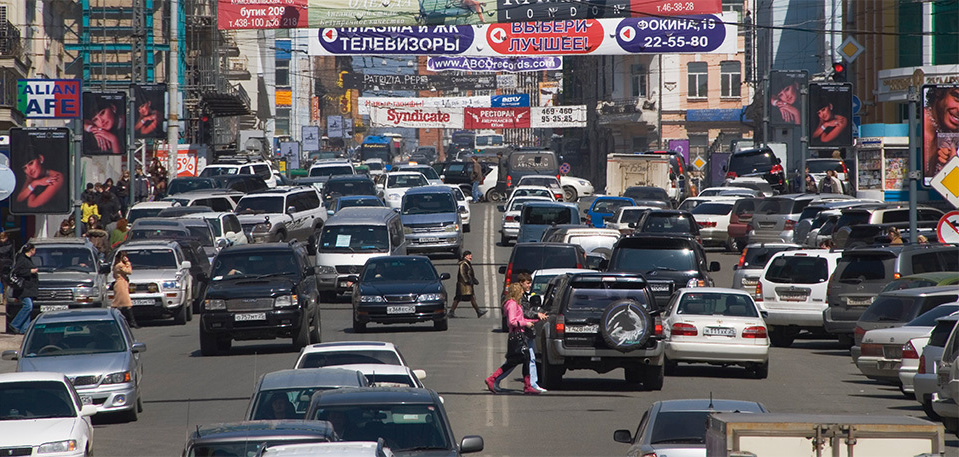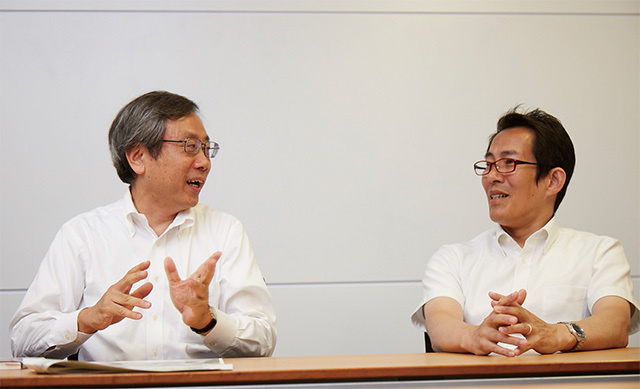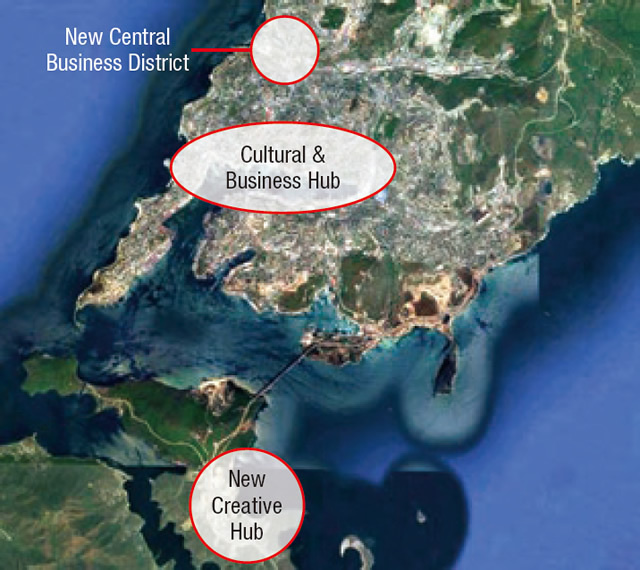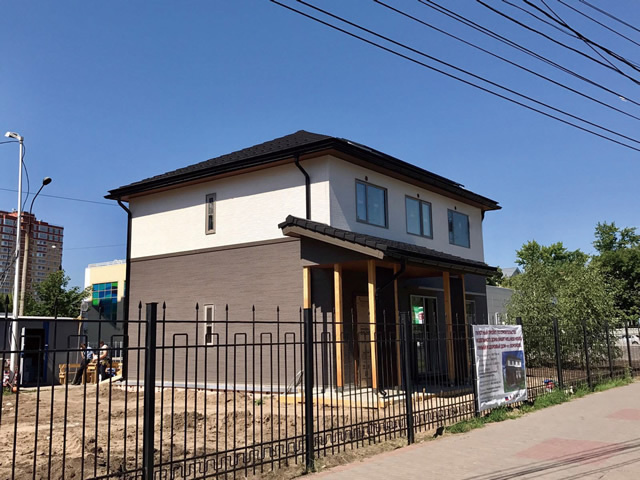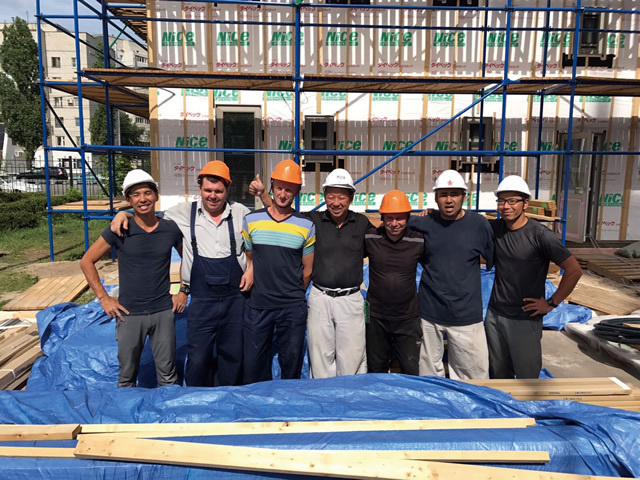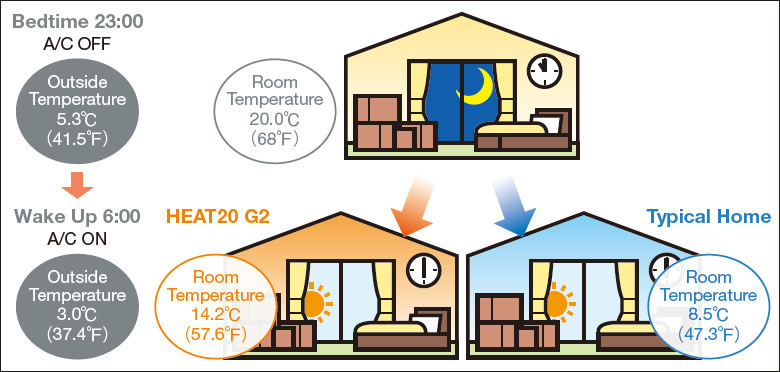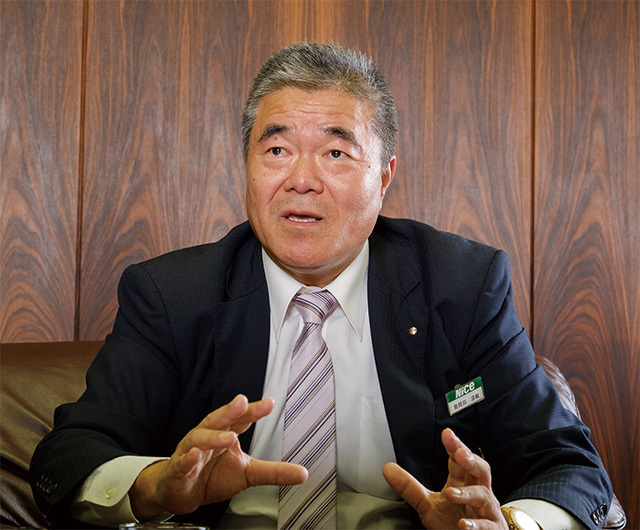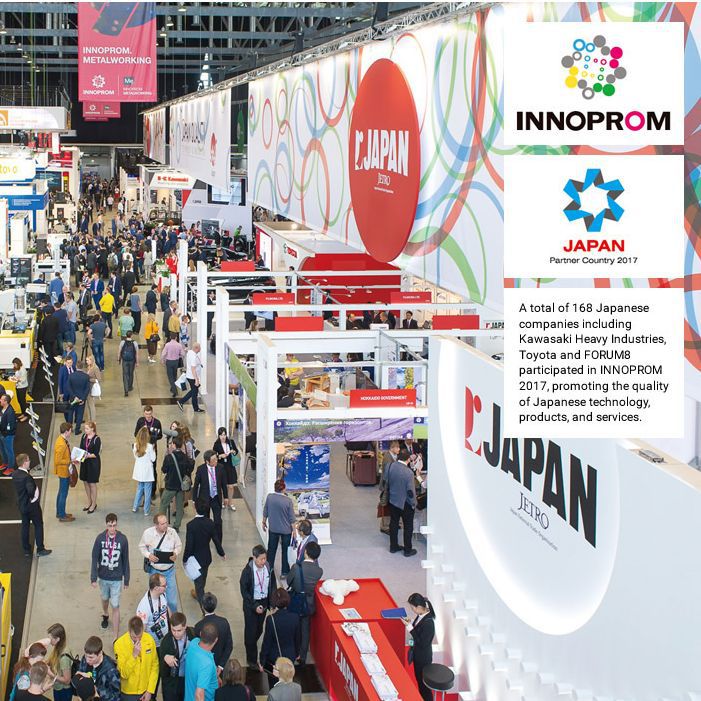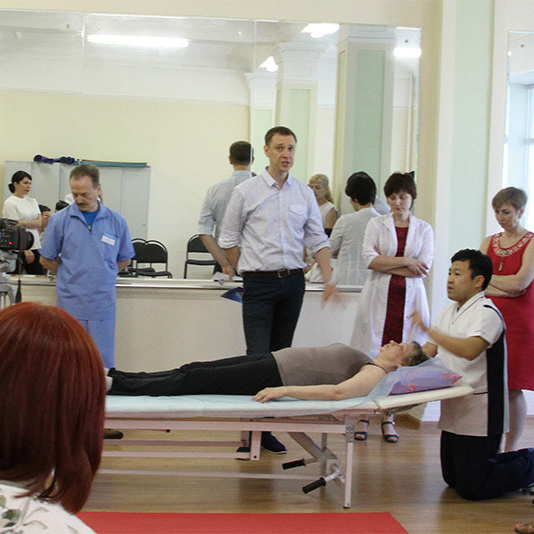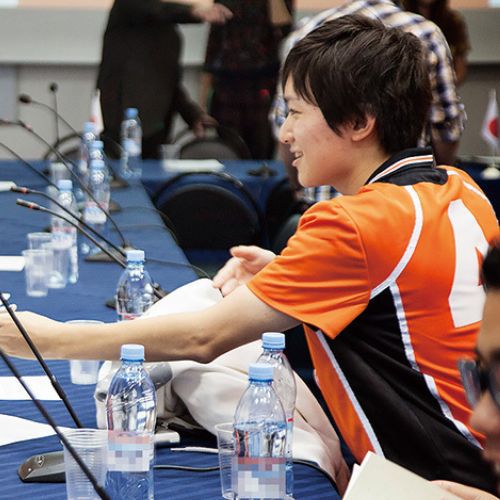One of the items in the eight-point cooperation plan is “developing comfortable and clean cities easy to reside and live in.” Japan, having Tokyo and many other metropolitan cities, has faced a diverse array of issues related to urban development. Russia, similarly, has been facing these issues as well. By utilizing its experience and expertise, Japan hopes to help tackle these issues Russia faces today. Under the auspices of both governments, some of the cooperation has already kicked off—a strategic urban development plan is being developed in Vladivostok, and a pilot project is underway in Voronezh.
Ryuichi Kizumi, of Nikken Sekkei Ltd. Project Development Department (right) and Nikken Sekkei Research Institute Principal Consultant Shigehisa Matsumura, Ph.D. (left).
Vladivostok: Creating Urban Development Strategies Aiming to Cultivate New Industries
Vladivostok is a major metropolitan city, home to the Far Eastern Federal University with over 40,000 students. Recently, the city has been suffering from a decline in population, particularly the young generation. Although the city has a sizable influx of students, it has not been able to retain them postgraduation. The city must offer places to work in order to stop the outflux, thus it is critical to bring in new industries. Japan’s Nikken Sekkei Ltd. is leading the creation of a strategic urban development plan that aims to establish new industries and bolster the city’s economic development.
“Research and tourism are the core elements of our plan for bringing in new industries. One of the plans is to create a synergistic effect between the various research institutes at the Far Eastern Federal University and venture businesses. This will lead the business to expand into the existing urban districts, encourage investment from around the world and create new industries and employment opportunities,” explains Nikken Sekkei’s Ryuichi Kizumi. As part of the plans to renovate central urban districts and to boost tourism, the cross point of Vladivostok’s railway station and the harbor will be redeveloped. Nikken Sekkei’s expertise from development of numerous station plazas and bay areas will come into full use.
Another crucial element for efficient revitalization of Vladivostok is the dissolution of traffic jams in the core of the city. For example, Tokyo has over 13 million people yet relatively few traffic jams, thanks to its welldeveloped urban sub-centers and transportation infrastructure. Nikken Sekkei plans to put their knowhow gained in Tokyo to use in Vladivostok, breaking up the single concentration of features into three areas connected by a circular highway (consisting of the existing core around Vladivostok station, a newly developed area for city and state administrations, and
Far Eastern Federal University).
As consultations with Russia continue, a new map for Vladivostok is taking form.
Voronezh: Housing Construction for Convenient and Healthy Living
Meanwhile, a Japanese “smart wellness house” is being built in Voronezh under the supervision of Nice Corporation. Many of the houses built during the Soviet Union era are aging and in need of reconstruction, especially improvements in the insulation. “Smart wellness houses” are houses that have a high degree of insulation and a small range of interior temperatures, making them not only comfortable, but also contributing to the health of occupants by helping to maintain stable blood pressure.
“I believe that once the Russian people get to know the great benefits of the superb technology installed in these wooden houses, such as the efficiency-based energy savings and the contribution to health, the Russian housing situation will change drastically,” opines project manager Kiyotoshi Katsumata.
With its expertise in housing construction, Japan will continue to contribute to developing a better and more convenient lifestyle in Russia.


























